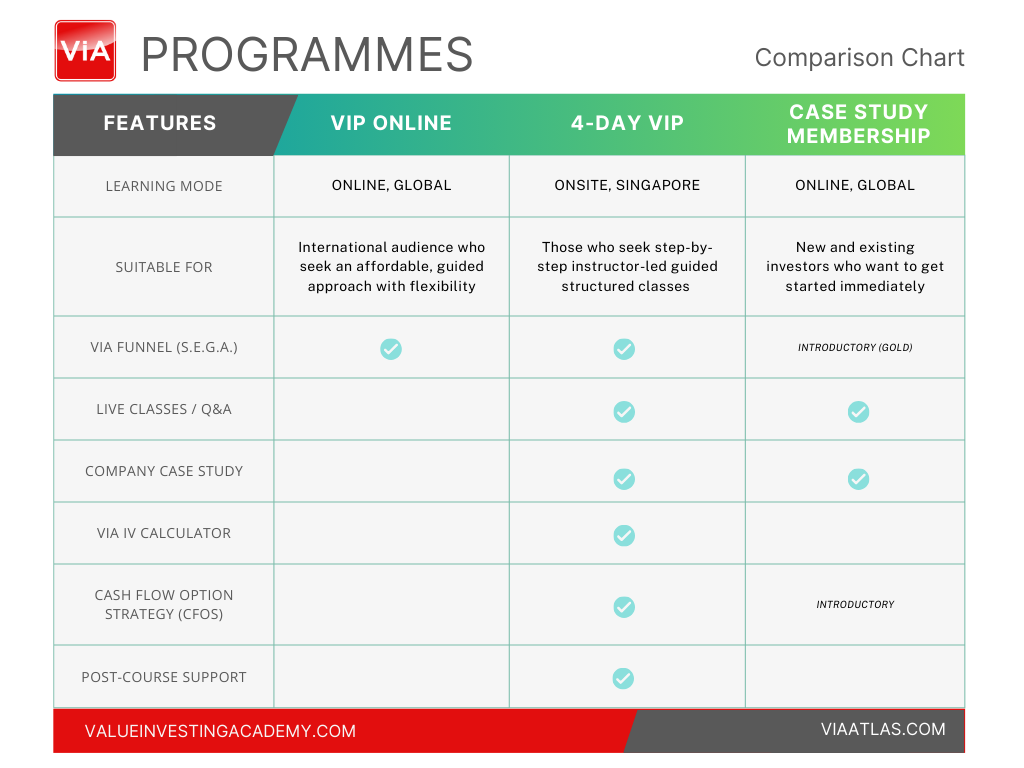The "Secret Sauce" That Makes Great Companies Unbeatable (And How to Find Them)
Share this article
Imagine two burger joints on the same street. One always has a line out the door, while the other struggles to fill seats. The busy spot isn’t just lucky—it has a secret sauce (literally or figuratively) that keeps customers coming back. In investing, we call this secret sauce an economic moat—and it’s the key to finding companies built to last.
If you’re new to investing, understanding economic moats is like discovering a cheat code. These moats protect companies from competitors, helping them thrive for decades. Let’s break down what they are and why they matter for your money.
What’s an Economic Moat?
Think of a moat like a protective barrier around a castle. The wider and deeper it is, the harder it is for enemies to attack. For companies, a moat is what makes them hard to copy and hard to beat. Businesses with strong moats can:
- Keep customers loyal for life
- Raise prices without losing sales
- Stay profitable even during tough times
5 Types of “Secret Sauces” in Business
1. The Brand Everyone Trusts
Example: Coca-Cola
Some brands are so loved that people pay extra for them. You might grab a Coke instead of a cheaper soda because you know the taste. That loyalty is a moat.
Why it matters: Strong brands = steady customers = steady profits.
2. The Cost Crusher
Example: Walmart
Walmart sells things cheaper than most competitors. How? They buy in bulk and run super-efficient stores. Rivals can’t match their prices without losing money.
Why it matters: Companies that make things cheaper can dominate their industries for years.
3. The “Everyone’s Using It” Effect
Example: Facebook
The more people use Facebook, the more valuable it becomes. If all your friends are there, you won’t switch to a new app—even if it’s better.
Why it matters: Popular networks keep growing because everyone’s already there.
4. The “Too Much Hassle to Quit” Trap
Example: Microsoft
Businesses using Microsoft software rarely switch to competitors. Why? Retraining staff and transferring files is a nightmare.
Why it matters: If it’s too annoying to leave, customers stay forever.
5. The One-of-a-Kind Product
Example: Drug Companies
Patents let pharmaceutical companies be the only ones selling a life-saving drug for years. No competition = big profits.
Why it matters: Unique products = no rivals stealing your customers.
Want to Learn How to Find Moats Yourself?
Investing isn’t about chasing “hot” stocks—it’s about finding durable companies that grow steadily. Here’s why moats matter:
- Safety First: Companies with moats survive recessions better. During the 2008 crash, strong brands like McDonald’s dropped less than weaker ones.
- Sleep Better at Night: You won’t panic-sell if you own businesses competitors can’t crush.
- Long-Term Growth: Moats let companies reinvest profits to grow even bigger.
Mistakes New Investors Make (And How to Avoid Them)
- Mistake: Buying “cheap” stocks without moats.
Result: The company stays cheap… or gets cheaper. - Mistake: Ignoring customer loyalty.
- Result: Profits vanish when customers switch to competitors.
- Mistake: Overcomplicating things.
Result: Missing great companies in “boring” industries like toothpaste or trash collection.
Want to Learn How to Find Moats Yourself?
- Analyze financial statements (without getting lost in spreadsheets)
- Calculate a company’s true value
- Build a portfolio of moat-protected stocks
Join Our Free Webinar: Value Investing Made Simple
- A deep dive into a fast-growth company case study.
- What are the key financial metrics when evaluating whether a stock has strong growth potential.
- Step-by-step guide on how to apply value investing methodology on real-world companies.
- Learn the exact criteria that successful investors use to evaluate a company.
- How to determine the intrinsic value of a stock so you'll know exactly when to enter or exit the market.
- How ViA Atlas Intrinsic Value (IV) Directory can get you started on building your own portfolio of superhero stocks, even for busy professionals without much time to spare
This process can be time-consuming and complex, especially if you are just starting out or juggling investing with a full-time job.
Remember: Successful investing isn't about following trends—it's about finding quality companies at attractive prices and having the patience to let their true value emerge.
Why This Matters for You
Investing isn’t gambling—it’s owning pieces of great businesses. Companies with moats give you the best of both worlds: stability and growth. Whether you’re saving for retirement, a house, or your kids’ education, this approach helps you build wealth safely.
See Value Investing in Action
Presented by Cayden Chang
Founder of Value Investing Academy and Award-Winning International Speaker, Lifelong Learner Award 2008, Personal Brand Award 2017
You will learn:
- A deep dive into a fast-growth company case study.
- The key financial metrics used when evaluating whether a stock has strong growth potential
- Step-by-step guide on how to apply the Value Investing Methodology on real-life companies
- The exact criteria that successful investors use when evaluating any company
- How to determine the intrinsic value of a stock so you will know exactly when to enter or exit the market
- How ViA Atlas Intrinsic Value (IV) Directory can get you started on building your own portfolio of superhero stocks, even for busy professionals without much time to spare.
Click the button below to reserve your spot now.

Suitable For
Solutions For
Mind Kinesis Investments Pte Ltd. All Rights Reserved.
Investify Symposium 2024
Upon registration, you will receive a URL to claim your webinar access pass.
Robert G Allen

Through the past 40 years, MILLIONS of people have attended his live seminars and his graduates have earned BILLIONS in profits by following his financial advice. Today there are literally thousands of millionaires and multi-millionaires worldwide who attribute their success to Mr. Allen’s systems and strategies. Empowered by his philosophy of the Enlightened Entrepreneur, his students have generously contributed over 50 million dollars to their favorite churches, causes and charities.
As a public speaker, he has spoken to audiences worldwide as large as 20,000 people, sharing stages with the likes of Sir Richard Branson, Tony Robbins, Robert Kiyosaki, Oprah Winfrey, Prime Minister Tony Blair and Donald Trump. In America, the National Speaker Association gave him an award as America's Top Millionaire Maker.
As a trainer and educator, he has spoken to groups all over the world from United States, Singapore, Mexico, Canada, South Africa, Russia, Kazakhstan, Latvia, Slovenia, Australia, Italy, England, Japan, Taiwan, Hong Kong and China. He teaches on the subjects of personal finance, wealth creation, multiple streams of income, entrepreneurship, authorship, sales, marketing and personal growth.
He is a popular media guest appearing on hundreds of radio and television programs including Good Morning America, Regis Philbin, Neil Cavuto and Larry King. He has been the subject in numerous international publications including the Wall Street Journal, The Los Angeles Times, The Washington Post, Newsweek, Barons, Redbook, Money Magazine and The Reader Digest to name just a few.
Ernee Ong

Ernee Ong is the co-founder of Proptiply, a property consulting and investment education company that builds on the concept of co-living to generate rental income. He aims to educate and empower aspiring property investors to attain their life goals through prudent and sound property investing principles.
Ernee is a loving husband to Jelene and a father to two wonderful daughters. Alongside Jelene, he is a co-founder and the driving force behind Proptiply™.
Proptiply™is a Property Education Company that empowers students with a focus on teaching them how to build cashflow by leveraging other people's resources and scaling up. Ernee has achieved remarkable success, moving from living in a 3-room HDB flat to owning a landed property and acquiring an additional one.
Ernee will be sharing insights into how individual Singaporeans or Permanent Residents (PRs) can scale up their property portfolio even with limited resources. His journey has been featured in prestigious media outlets like CNA, the South China Morning Post, and other news channels, showcasing how he managed to build an 8-figure business while overseeing 300+ properties in Singapore.
Vincent Chua

Vincent is a financial planner who specializes in investment and retirement planning. He helps people achieve their financial goals and dreams through comprehensive and customized solutions.
He has nearly a decade of experience in the financial services industry and is a Certified Financial Planner, CFP®. He is passionate about educating people on the importance and relevance of financial planning in today's world.
He grew up in Toa Payoh, a mature estate in Singapore, witnessing many senior citizens struggle with health and financial issues. They often told him that "it's better to be dead than to be sick in Singapore". This made him realize the value of money and motivated him to learn about investments at a young age. Later, he discovered the financial planning industry and decided to pursue it as a career.
He loves what he does because he makes a positive difference in people's lives. Whether it's helping them grow their wealth, protect their income, or plan for retirement, he enjoys seeing them achieve their desired outcomes and live their best lives.
Self-made Millionaire Investor
Liu Feng

Liu Feng graduated from Beijing University and came to Singapore in 1994, and went from having a mere S$100 in his wallet to becoming a millionaire. Armed with a strong determination, he made the majority of his fortune through Value Investing using principles created by Warren Buffett, one of the richest man in the world. Across the years, he has accumulated extensive experience and in-depth knowledge in stock investing.
Liu Feng specialized in stock investment. Since he first read a book about Warren Buffet in 1996, he has since done extensive studies on Value Investing Gurus – Benjamin Graham, Philip Fisher, Peter Lynch and John Neff. Through continuously fine-tuning his investment model, combined with his investment experience, he has founded a set of Investment Philosophies, Value Investing Principles and Methodologies to create passive income. Those who have been taught by him have found his teaching easy to understand as well as benefited from his many years of experience and insight on stock investments.
As an experienced value investor, Liu Feng incorporates real case studies of numerous Singapore-listed companies in his training, coupled with a systematic and proven methodology to provide a distinct advantage in the stock market.
Lauren C Templeton

Lauren C. Templeton is the founder and Chief Executive Officer of Templeton & Phillips Capital Management, LLC. Prior to founding the firm in 2001, Lauren was employed with Morgan Stanley, Homrich Berg, and New Providence Advisors, a hedge fund management company, based in Atlanta, GA.
“Author of “Investing the Templeton Way: the Market Beating Strategies of Value Investing's Legendary Bargain Hunter”, Lauren is also the great niece of Sir John M. Templeton and is a current member of the John M. Templeton Foundation, established in 1987 by renowned international investor, Sir John Templeton. She began investing as a child under the heavy influence of her father as well as her late great-uncle, Sir John Templeton.
About Sir John Templeton
Sir John Marks Templeton was born in 1912, in the small town of Winchester, Tennessee. He attended Yale University and graduated near the top of his class and as President of Phi Beta Kappa. He was named a Rhodes Scholar to Balliol College at Oxford, from which he graduated with a degree in law.
Templeton started his Wall Street career in 1938 and went on to create some of the world’s largest and most successful international investment funds. He was famous for picking companies that hit “points of maximum pessimism” (ie. Rock bottom prices). When war began in Europe in 1939, he borrowed money to buy 100 shares each in 104 companies selling at one dollar per share or less, including 34 companies that were in bankruptcy. Only four turned out to be worthless, and he turned large profits on the others.
Templeton established the Templeton Growth Fund in 1954. With dividends reinvested, each $10,000 invested in the Templeton Growth Fund Class A at its inception would have grown to $2 million by 1992. He eventually sold the family of Templeton Funds to the Franklin Group — scores of them with $13 billion in assets — in 1992, and turned to philanthropies that had engaged him for decades.
Investing the Templeton Way Podcast
Investing the Templeton Way with Lauren Templeton is a podcast that explores the world’s most intriguing investment topics from the overseas markets to mastering our own minds. Gather investment wisdom and educate yourself as you listen to interviews with exclusive managers, executives, and entrepreneurs on a wide range of engaging topics. Visit the Podcast Page.
Dr Todd A Finkle

Todd A. Finkle, Ph.D. is the Pigott Professor of Entrepreneurship at Gonzaga University. He has taught for 34 years at 4 different universities, publishing more than 270 articles, books, presentations, and grants.
Dr. Finkle is an expert on Warren Buffett and Entrepreneurship. His recent book titled," Warren Buffett: Investor and Entrepreneur," is published by Columbia University Press. The book traces the entrepreneurial paths that shaped Buffett’s career, from selling gum door-to-door during childhood to forming Berkshire Hathaway and developing it into a global conglomerate through the imaginative deployment of financial instruments and creative deal making.
Dr. Finkle's initial motivation for writing the book was to show the layperson how Buffett evaluates potential investments. Finkle also zeros in on Buffett’s longtime business partner Charlie Munger and his contributions to Berkshire Hathaway's success. Finkle draws key lessons from Buffett’s mistakes as well as his successes, using these failures to explore the ways behavioral biases can affect investors and how to overcome them.
Dr. Finkle is a pioneer and innovator in the field of entrepreneurship education. He has been an entrepreneur of six ventures and consulted with a wide variety of entities including countries and universities from all over the world. Dr. Finkle has been interviewed or appeared in a variety of media outlets including the Cleveland Plain Dealer, Entrepreneur Magazine, Forbes Magazine, Omaha World Herald, Wall Street Journal, The Washington Post, and several radio and television stations.
Cayden Chang

Cayden Chang is the Founder of Mind Kinesis Investments Pte Ltd and Value Investing Academy Pte Ltd, which runs the first and only Value Investing training that is recommended and endorsed by Mary Buffett, the internationally acclaimed author and speaker of how billionaire Warren Buffett invests. His company also runs Value Investing workshops across Asia. With over 50,000 graduates across 11 cities in Asia, his methodology is tested, proven and easily duplicable even for someone who has no prior experience in investing.
Cayden holds two Bachelors’ Degrees and a Masters Degree from National University of Singapore. He has also been trained in value investing by Professor Bruce Greenwald in Columbia University, the institution where Billionaire investor Warren Buffett met Professor Benjamin Graham, as well as by Professor George Athanassakos, the finance professor who holds the Ben Graham Chair in Value Investing at the Richard lvey School of Business, University of Western Ontario.
Cayden has also received the Lifelong Learners Award 2008 from the Minister of Manpower on 18 November 2008, Mr Gan Kim Yong and he was featured in “TODAY” newspaper, “938Live Online News”, “938Live Radio Station”, “Mediacorp Xin.Sg” and “The Straits Times”. He was subsequently featured in “938Live Breakfast Club” Radio, “Channel News Asia AM Live”, “Shareinvestment”, “The Edge”, and “The Exquisite” Magazine for sharing his secrets of financial success.
In July 2010, he was diagnosed with Renal Cancer. Despite being ill, he launched his first charity project in August 2010, where he donated all of the sales proceeds of his book to The Straits Times School Pocket Money Fund, and was featured on 938 Live Radio Station and The Straits Times. His fight with Renal Cancer was subsequently published in The Straits Times and interviewed on 938Live Radio Station. His life story was featured in The Sunday Times on 10 June 2012. He survived terminal stage Renal Cancer (Stage 4) in September 2014 and launched his second book titled “The Book of Hope” to raise funds for cancer research.



